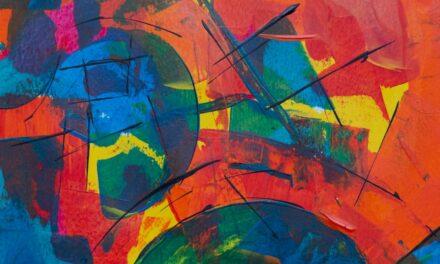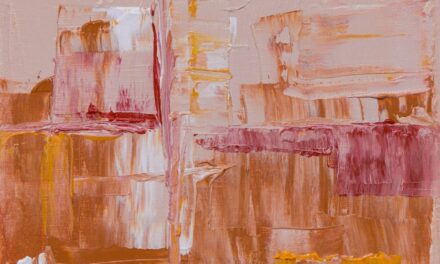In the realm of art, the ability to distil complex forms into simplified shapes is a fundamental skill that can greatly enhance an artist’s work. Simplified shapes serve as the building blocks for more intricate designs, allowing artists to capture the essence of their subjects without becoming overwhelmed by detail. This approach is particularly beneficial for young artists who are just beginning to explore their creative potential.
By focusing on basic geometric forms, such as circles, squares, and triangles, budding artists can develop a strong foundation that will support their artistic journey. The beauty of simplified shapes lies in their versatility. They can be adapted to represent a myriad of subjects, from animals and landscapes to abstract concepts.
This adaptability not only makes drawing more accessible but also encourages experimentation and personal expression. As young artists learn to see the world through the lens of simplified shapes, they begin to understand the underlying structure of their subjects, which can lead to more confident and expressive artwork. Embracing this method can transform the way they approach drawing, fostering a sense of accomplishment and joy in their creative endeavours.
Summary
- Simplified shapes are the building blocks of drawing and can be used to create a wide variety of animals and objects.
- Basic shapes like circles, ovals, and triangles can be used to create animals such as cats, dogs, and birds.
- Adding depth and dimension to simple shapes can bring drawings to life and make them more realistic.
- Details such as fur, feathers, and facial features can be added to simplified shapes to add personality and character to animals.
- Young artists can improve their drawing skills by practicing with simplified shapes and experimenting with different art styles.
Basic Shapes for Different Animals
When it comes to drawing animals, simplified shapes provide an excellent starting point. Each creature can be broken down into basic geometric forms that capture its unique characteristics. For instance, a cat can be represented using a combination of circles for the head and body, triangles for the ears, and ovals for the legs.
This method not only simplifies the drawing process but also allows young artists to focus on proportion and placement before adding intricate details. Similarly, a dog can be constructed using a series of overlapping shapes. A large oval can represent the body, while smaller circles can depict the head and paws.
By understanding how these shapes interact with one another, artists can create a more accurate representation of the animal’s form. This technique encourages observation and critical thinking, as young artists learn to identify the shapes that make up the creatures they wish to depict. As they gain confidence in their ability to simplify complex forms, they will find themselves more willing to tackle a wider variety of subjects.
Creating Depth and Dimension with Simple Shapes
While simplified shapes are excellent for establishing the basic structure of an animal, they can also be employed to create depth and dimension within a drawing. By manipulating the size, overlap, and positioning of these shapes, artists can convey a sense of three-dimensionality. For example, when drawing a bird in flight, an artist might use larger shapes for the body and wings in the foreground while employing smaller shapes for those further back.
This technique not only enhances realism but also adds visual interest to the composition. Shading is another effective way to create depth using simplified shapes. By applying varying degrees of pressure with a pencil or incorporating different tones with colour, artists can suggest light and shadow on their forms.
For instance, a simple sphere can be transformed into a three-dimensional object by shading one side darker than the other, indicating where light hits the surface. This understanding of light and shadow is crucial for young artists as they learn to bring their drawings to life, making them appear more dynamic and engaging.
Adding Details to Bring Animals to Life
Once the basic shapes are in place, young artists can begin to add details that breathe life into their animal drawings.
For example, after establishing the basic form of a horse using simple shapes, an artist might add details such as flowing manes, expressive eyes, and distinctive markings.
These elements not only enhance the character of the animal but also allow for individual expression. Incorporating textures is another way to enrich a drawing. Young artists can experiment with different techniques to depict fur, feathers, or scales using simple lines and patterns.
For instance, short, quick strokes can suggest the softness of a rabbit’s fur, while longer lines may convey the sleekness of a fish’s scales. By observing real-life animals and studying their textures, young artists can develop their skills in rendering these details convincingly. This process not only improves their technical abilities but also deepens their appreciation for the beauty found in nature.
Tips for Using Simplified Shapes in Drawing
To maximise the benefits of using simplified shapes in drawing, young artists should keep several key tips in mind. Firstly, it is essential to practice regularly.
Artists should not shy away from making mistakes; rather, they should view them as valuable learning opportunities that contribute to their growth. Another important tip is to observe the world around them closely. By taking note of how different animals are constructed from basic shapes, young artists can train their eyes to see these forms in everyday life.
Encouraging them to sketch from observation will help solidify their understanding of shape relationships and proportions. Additionally, experimenting with different mediums—such as pencils, markers, or digital tools—can further enhance their skills and allow for greater exploration of simplified shapes in various contexts.
Practice Exercises for Young Artists
To reinforce the concepts of simplified shapes in drawing animals, young artists can engage in a variety of practice exercises designed to build their confidence and skills. One effective exercise is to create a series of animal sketches using only basic shapes. For instance, they might choose five different animals and break each one down into its simplest components before refining their drawings with details and textures.
Another engaging exercise involves creating a “shape collage.” Artists can cut out various shapes from coloured paper or draw them on a page and then arrange them into animal forms. This playful approach encourages creativity while reinforcing the idea that complex subjects can be constructed from simple elements. Additionally, young artists might benefit from timed drawing challenges where they have only a few minutes to sketch an animal using simplified shapes.
This exercise promotes quick thinking and helps them become more comfortable with spontaneous creativity.
Using Simplified Shapes in Different Art Styles
The application of simplified shapes extends beyond traditional drawing techniques; they can also be integrated into various art styles. For instance, in cartooning or illustration, exaggerated forms derived from basic shapes can create whimsical characters that resonate with audiences of all ages. Young artists can experiment with this style by taking familiar animals and amplifying certain features—such as oversized heads or tiny bodies—while still maintaining recognisable characteristics.
In contrast, simplified shapes can also be employed in more abstract art forms. Artists may choose to represent animals through geometric patterns or stylised forms that evoke emotion rather than realism. This approach encourages young artists to think outside the box and explore how shapes can convey meaning beyond mere representation.
By experimenting with different styles and techniques that utilise simplified shapes, young artists will develop a diverse artistic vocabulary that enriches their creative expression.
Conclusion and Encouragement for Young Artists
In conclusion, mastering the use of simplified shapes is an invaluable skill for young artists embarking on their creative journeys. By breaking down complex forms into manageable components, they can build confidence in their abilities while exploring a wide range of subjects—from animals to abstract concepts. The process of creating depth and dimension through shape manipulation further enhances their understanding of art as a dynamic medium.
As they continue to practice and experiment with simplified shapes across various styles and techniques, young artists should remember that every masterpiece begins with a single line or shape. Embrace mistakes as part of the learning process and celebrate each small victory along the way. With dedication and passion, there are no limits to what they can achieve in their artistic pursuits.
So grab your pencils and let your imagination soar—there’s an entire world waiting to be drawn!
If you are interested in exploring more about art, you should definitely check out the article Masterpieces & More. This article delves into various masterpieces from different artists and provides a deeper insight into the world of art. It is a great resource for art enthusiasts looking to expand their knowledge and appreciation for different art forms.
FAQs
What is the purpose of using simplified shapes for drawing animals?
Using simplified shapes for drawing animals helps young artists to break down complex forms into basic geometric shapes, making it easier for them to understand the structure and proportions of the animal they are drawing.
How does using simplified shapes benefit young artists?
Using simplified shapes helps young artists to develop their observational skills, understand the basic forms of animals, and build confidence in their drawing abilities. It also provides a foundation for more detailed and realistic drawings in the future.
What are some examples of simplified shapes used for drawing animals?
Examples of simplified shapes for drawing animals include circles for heads, ovals for bodies, triangles for ears, and rectangles for legs. These basic shapes can be combined and manipulated to represent a wide variety of animals.
How can young artists learn to use simplified shapes for drawing animals?
Young artists can learn to use simplified shapes for drawing animals through practice, observation, and guidance from teachers or experienced artists. They can start by studying the basic shapes of animals and then gradually incorporating them into their drawings.
Are there any specific techniques for using simplified shapes in drawing animals?
One technique for using simplified shapes in drawing animals is to start with a rough sketch using basic shapes, then refine the details as the drawing progresses. Another technique is to use overlapping shapes to create depth and dimension in the drawing.



